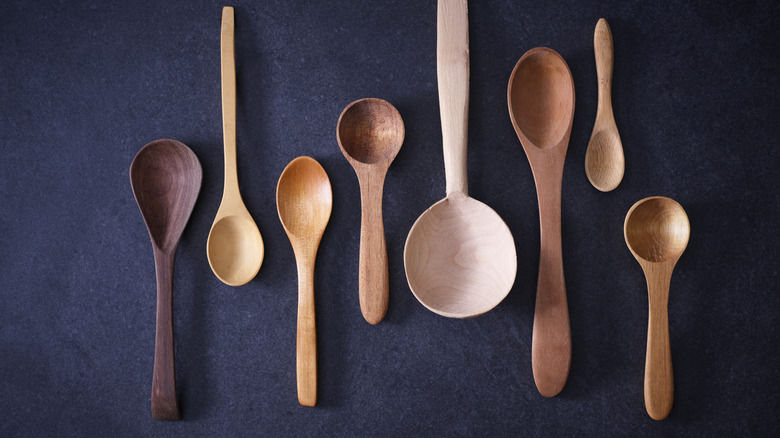Emeril Lagasse's Essential Pro Tip For Making The Best Roux
A delicious homemade stew is a treat that's hard to turn down. A big part of making stew, especially if we're talking a classic gumbo, is a quality roux. Yet that can be tricky to get just right. It's a good thing, then, that we have the wisdom of expert chefs to turn to, like the original television cook Emeril Lagasse, who's already dispensed culinary wisdom like steering clear of salted bouillon and urging you to give the admittedly odd New England chow mein sandwich a try.
Lagasse's secret to making top-notch roux? A wooden spoon. While he hasn't given an explicit reason for it, he's insisted on Instagram that this particular utensil is key to crafting a good roux. It's likely because wooden spoons don't conduct heat as well as metal ones, and since roux burns very easily, the wooden spoon can give you more control over the temperature and allow you to avoid burning. Additionally, wooden spoons don't scratch up the insides of pots as much as metal ones, which is especially important if you're working with a coated surface like enamel.
Speaking of heat, Lagasse also emphasizes that getting the temperature right is another key to achieving a good roux. Lagasse's advice is to set the heat just above medium to start and adjust as necessary as it cooks – which, yes, does mean that you'll be babysitting it a bit, but the results are worth it.
Making a Lagasse-style roux
If you want to make a Lagasse-worthy roux, one of the most important things you need is patience. Since roux is so delicate, it needs nearly constant stirring and attention. Leave it alone and you risk burning it, even if you're just stepping away for a minute.
How long a roux takes depends on what kind you're trying to make. Roux goes through different stages as it cooks, from white to dark roux, each of which is considered best for different types of food. Gumbo, for example, typically calls for dark roux, while a white roux is good for thickening béchamel sauce. On average, roux follows the "two beers" rule, where it gets brown to dark brown in the time it takes a responsible adult to finish two beers (no chugging, please).
One of the most important things to remember about roux is to stir constantly, so don't let up — your roux can burn faster than you would think if you stop stirring. To that end, Lagasse recommends a heavy-bottomed pot like a Dutch oven. Heavy-bottomed cookware distributes heat better throughout the roux and helps prevent hot spots that can cause nasty-tasting burned bits.

